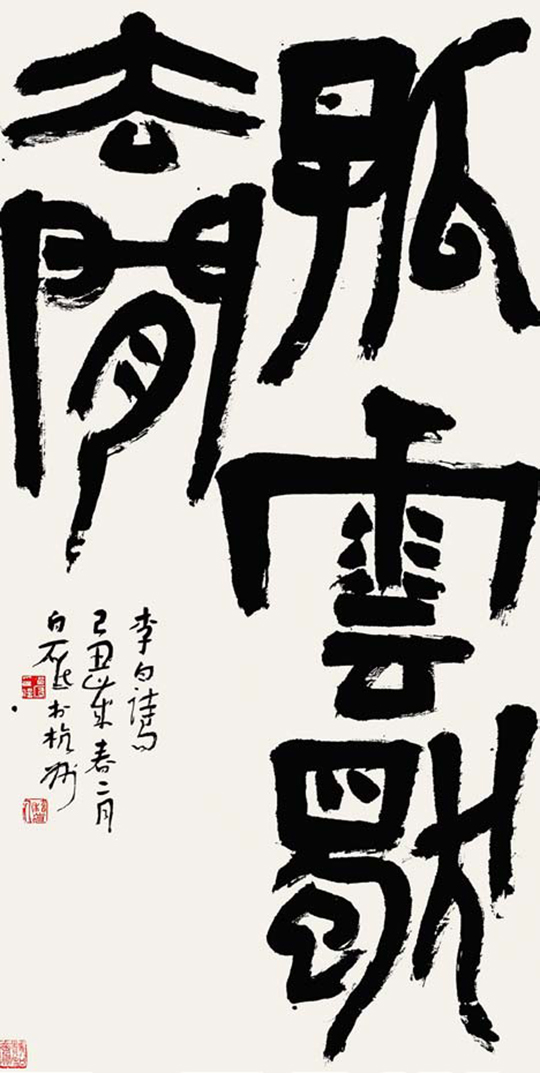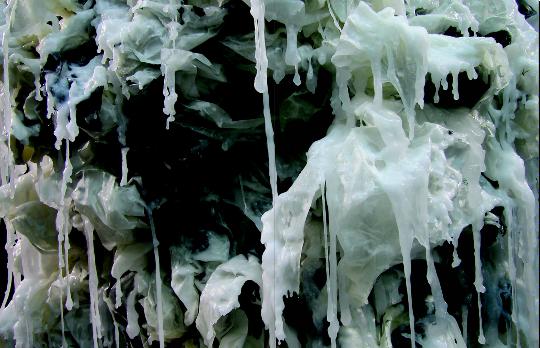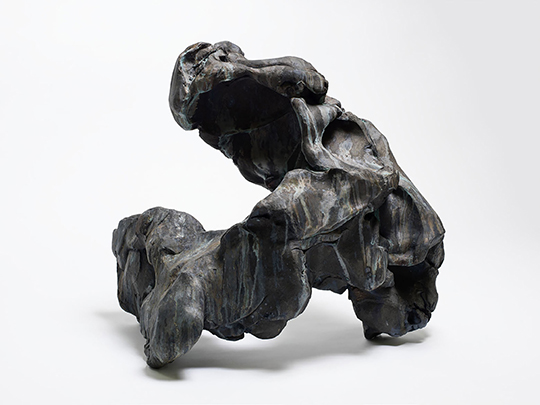CALLIGRAPHY, UNIVERSALITY
| December 22, 2015 | Post In LEAP 34

Since the 1980s, practices of calligraphy in contemporary art have tended towards a symbolic (and therefore political) presence. In the world of calligraphy, there now seems to be an attempt to liberate the medium from established systems and open up to new modes of writing and visual styles, from the modern approach of Qiu Jian to the academic school of Chen Zhenlian, and from the highly controversial folk style of Wo Xinghua to the popular book style of Liu Zhengcheng.

Bai Di remains an exception. Even without the use of other visual media—painting, video, installation, performance—he is able to differentiate himself from trends in modern experimental calligraphy, instead approaching the act of writing and creation of visual effects as a destination. Pursuing the pure expression of calligraphic language, his style is borne of scholarly research into the traditional system. While he cannot completely escape from the old systems of calligraphy, he draws on diverse elements that enrich and temper his practice with their own contributions to language. The writing is informed by a specialized line, ink, and modeling. In taking time and space for practice and creativity, Bai’s approach resembles more the creation of music or sculpture rather than painting.

Calligraphic writing based in logic does not make for a sufficient concept, but, through its objectification, the mechanisms of its practice can lead to a universal quality—much like Zhang Enli’s paintings of wires and pipes, here, too, a logic is extracted from the properties of specific objects. These precise lines liberate painting from the spatial and temporal. Similarly, Sui Jianguo attempts to remove the limitations of experience with Blind Portrait. A separation of the eye and hand encourages a kind of ignorance, an attempt to create a state of heterogeneous tangibility, but the experience cannot be entirely eliminated. What is finally presented here is a process of struggling with physical cognitive experience.

By contrast, Zheng Guogu is more familiar with calligraphy, an important media language embraced by his Yangjiang Group. Departing from their usual practices of destruction and provocation, the work Waterfall blurs any clear concept of material flow and replaces it with a ritual form derived from a certain time, place, and image, veering closer to the natural laws and metaphysics of calligraphy.
Contemporary calligraphy dwells here in this transcended identity—a symbol of its specificity open to a new perception of universality. (Translated by Maya Rudolph)


